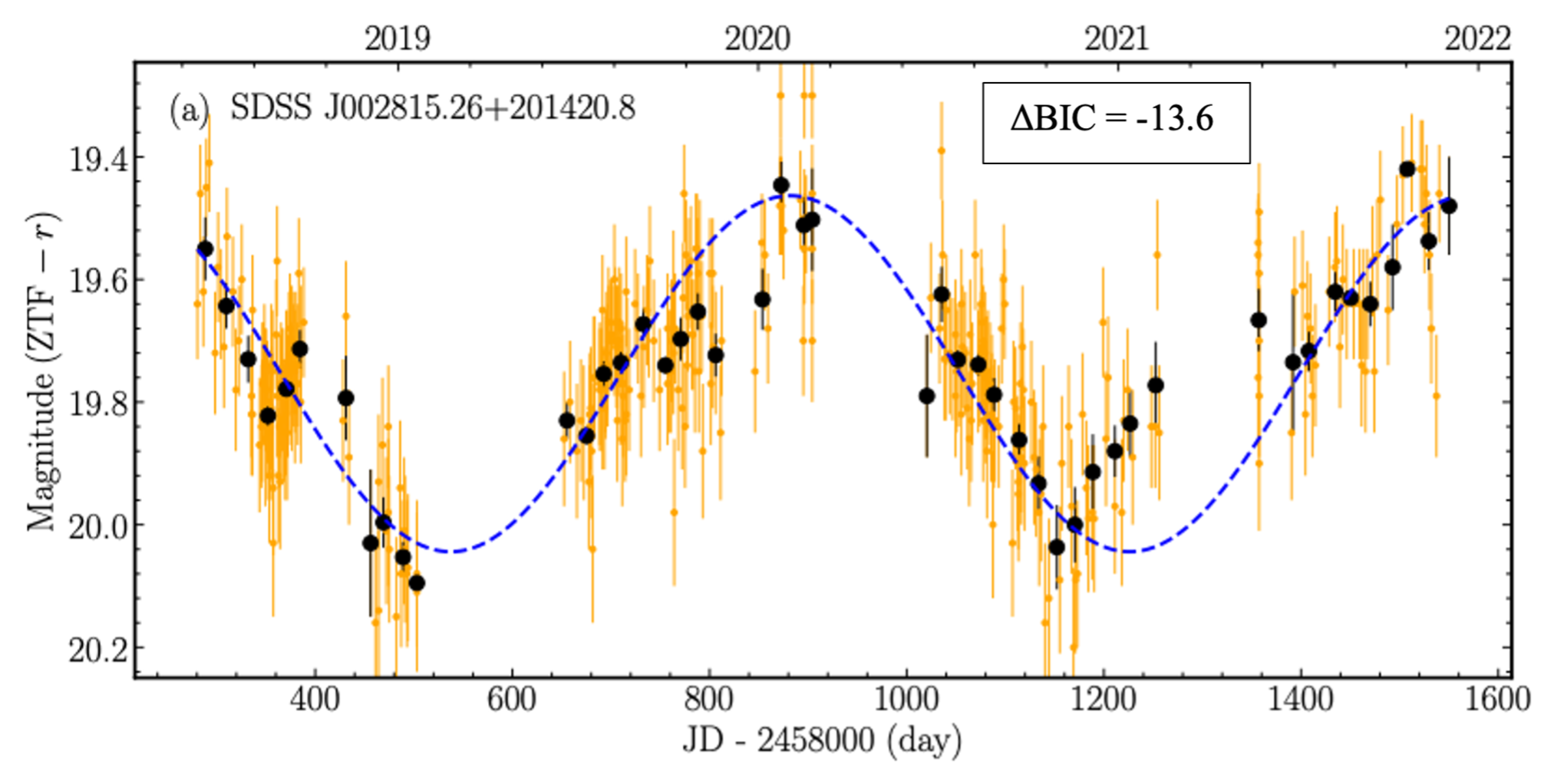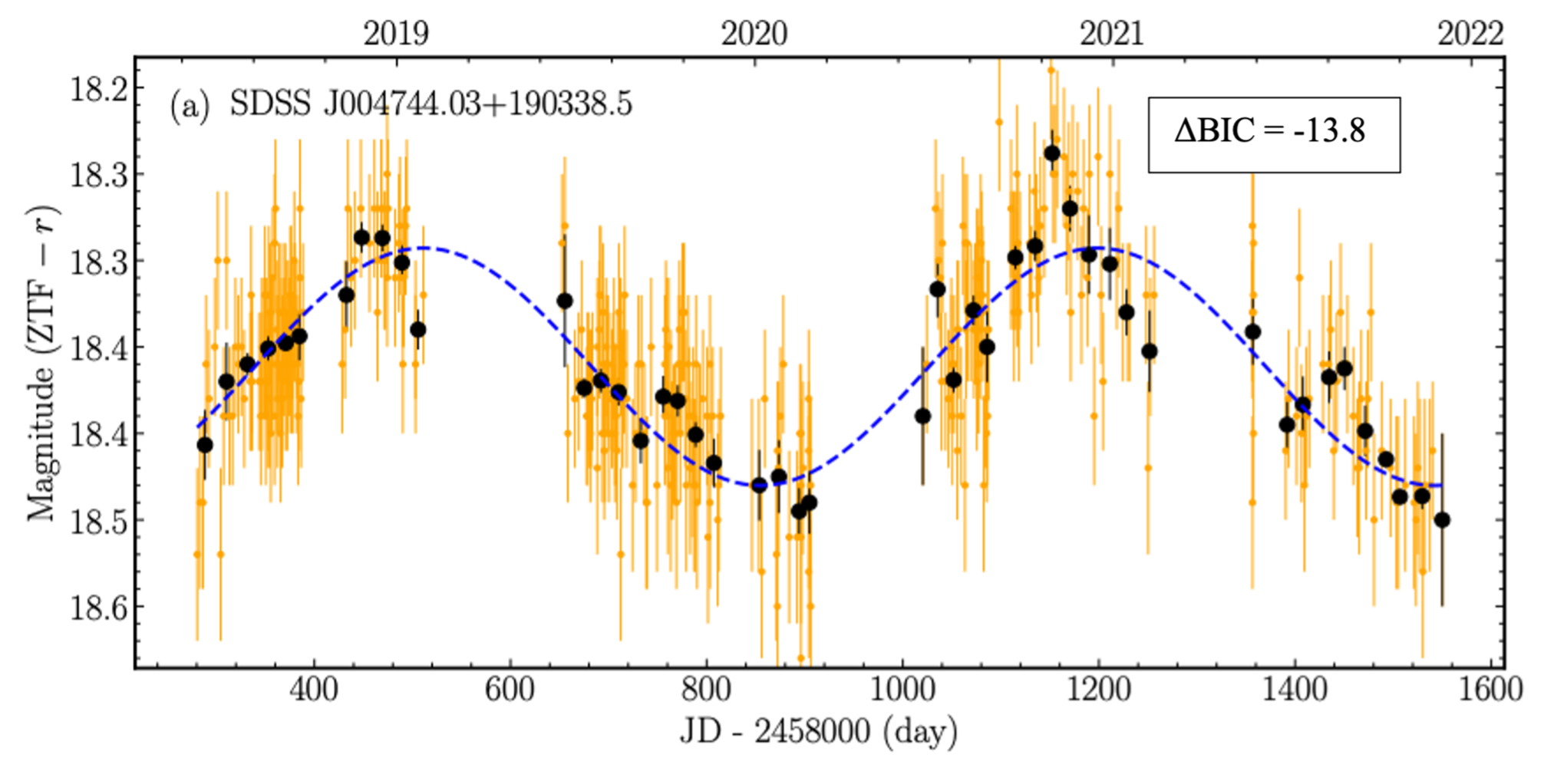Project Background/Intro
As part of the CIERA REU program, I worked in Professor Adam Miller's Time Domain group with Dr. Caitlin Witt (Check out her amazing paper on this topic HERE!) to develop a pipeline which employs Bayesian Statistics to search for Supermassive Black Hole Binaries by identifying Quasars with Periodic Variability.
In simpler words, Supermassive Black Holes, or their Quasar counterparts (The burning hot disk around the Black Hole), are extremely far away from us, and as such are too small to directly image with a telescope. So, to find them, we stare into the cores of galaxies for years at a time. If we notice a consistent, periodic brightening and dimming, we believe this is evidence that we are looking at a Supemassive Black Hole Binary. This periodic brightening and dimming (periodic variability) is a result of a phenomenon of Relativistic Beaming
To find these objects, we use a sampler. We give our sampler two things:
1) A light curve (an object's brightness over time) and
2) Two models which the sampler will try to fit to our light curve.

The first model (Left), called a Damped Random Walk, is used to model a singular Supermassive Black Hole light cuve--the brightness over time we'd expect to see from one of these objects. The second model (Right in green) is used to model a Supermassive Black Hole Binary--it uses the previous model, but adds some periodic variability to account for the Relativistic Beaming which happens in the orbit.
The sampler will then give us a number which tells us which model it thinks fits the light curve better--this is called a ΔBIC. If ΔBIC = 0, then the sampler is indifferent--it doesn't prefer either model more than the other. If ΔBIC << 0, however, our sampler strongly believes the light curve we gave it was produced by the second model. That is, it believes the object which produced that light curve is a Supermassive Black Hole Binary!
Getting this ΔBIC rating is the way we confirm whether or not we have found a Supermassive Black Hole Binary. For most of the summer, I have been working on validating the pipeline; that is, making sure the code is working as best as possible.
Thanks to extensive work throughout the final week of the program, we have validated the pipeline to our standards, and in the past couple days, we have begun applying the pipeline to real light curve data and embarked on our journey through the universe to find Supermassive Black Hole Binaries!



